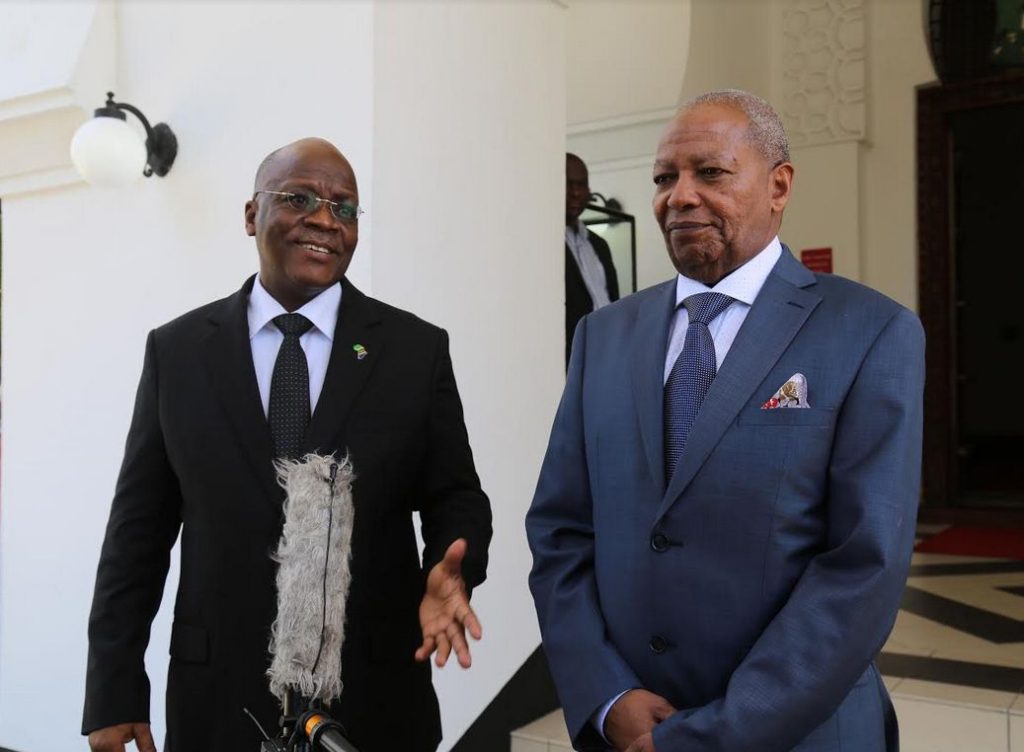Dr. Wilibrod Peter Slaa is no longer mentioned in superlatives in Tanzanian politics. Still, I am here to put the records straight: In the 2010 presidential campaign, he dared to dream and shared his vision about bullet train racing in our revamped railway system. The then CCM presidential candidate Jakaya Mrisho Kikwete scoffed at the idea, terming it “incredibly absurd.”
But now, the idea has taken off and materialized. Yet a few of us are willing to give Dr. Slaa the credit he fully deserves: the pioneer and a visionary leader who ingrained the bullet train into our hearts and minds.
He was born on 29th October 1948 (aged 75) in Karatu District, Tanganyika. He attended Kipalapala Seminary in Tabora Region, where he obtained a certificate in theology in 1977, and Kibosho Seminary School in Kilimanjaro Region, where he got a certificate in philosophy in 1973. Slaa holds various academic qualifications, including a PhD in law from St. Urban University in Rome, Italy, in 1977.
From 1992 to 1998, Dr Slaa was managing director of the Tanzania Society for the Blind. From 1985 to 1991, he was secretary-general of the Tanzania Episcopal Conference, and between 1982 and 1985, he was director of the Diocese of Mbulu Development. Dr Slaa was elected Chadema Secretary-general in 2002.
He served as Chadema vice-chairman from 1998 to 2002, Chadema MP for Karatu, and the party’s National Executive Committee member.
In 1995, he dumped CCM for Chadema after the CCM central committee disrespected and flipped the opinion votes of Karatu CCM District that had placed him above his closest challenger, Patrick Qorro. After seeing that his political career was halted, he moved on to Chadema, exhibiting a pragmatic and fiercely independent character at an hour of reckoning.
Read Related: DESTINY PRESIDENCY: Why President Samia’s Completion of the SGR Train is a Pivot to Our National Destiny
In Chadema, he rose through the ranks to become secretary-general in 2002. He had also served as Chadema vice-chairman from 1998 to 2002, Chadema MP for Karatu, and member of the party’s National Executive Committee. When Zitto Kabwe and his acolytes were being pushed out of Chadema, Dr. Slaa was a key plank in 2015 that shielded Freeman Mbowe from facing Kabwe in competitive politics.
With Mbowe, Dr. Slaa was instrumental in eliminating term limits, which effectively coronated Mr. Mbowe as a lifetime chairperson of Chadema. The central committee of Chadema received a Tshs 100 million cheque from a prominent Dar es Salaam-based businessman, Mr. Mustafa Sabodo.
Dr. Slaa, who received the cheque, promised the money would go to sink wells in various parts of rural Tanzania. To date, we have yet to hear what the money did!
In 2010, he was anointed by the Chadema central committee to seek the presidency through his political vehicle, Chadema. He faced the then-president Kikwete, who was aspiring to win a second term. During a discussion with the media in Dar es Salaam, Dr. Slaa made an election pledge that if he won, he would build Standard Gauge Railway and bring a bullet train to ride on it. He said bullet train could significantly reduce travel times from Dar es Salaam to Mwanza.
When President Kikwete heard him, he parodied the “bullet train” as “incredibly absurd.” That exchange sparked a heated national debate on the pros and cons of having a bullet train. Paradoxically, it was in the second term (2010-2015) that through the agitations of the Parliament, the Kikwete administration laid down the basic plans, such as feasibility studies, that his successor, Dr. John Pombe Magufuli, executed to the letter.
In 2015, Mbowe accepted Edward Lowassa to join Chadema as its presidential torchbearer. This irked Dr. Slaa, who bolted the party and joined CCM. He was rewarded with the Ambassadorial job, which he held until retirement. His staunch stand against the Dar es Salaam port leasing to DP World led the president to unclothe him of the ambassadorial title. For his activism, he was relieved of the Ambassadorial role.
The implementation of SGR during President Magufuli’s reign was not without hitches. From procurement to the initial stages of implementation, we swayed from one crisis to another. Who will forget Dr. Harrison Mwakyembe’s African-American buddies, who promised to procure a bullet train for us and displayed photographs?
Also, read Chadema’s Internal Strife: A Constitutional Crisis Threatens Party Unity
However, the real trains differed and did not meet SGR standards. The cost of the SGR is still exorbitant, and at the rates we have already paid, it is becoming clear we will never put them all over the country.
The biggest weakness of the SGR is its overdependence on foreign contractors. Had China applied the rates we have used to build our central line SGR, they would not have been able to construct all the kilometres they have.
Tanzania has spent about Tshs 6 trillion to construct 506 km, or Tshs 12 billion per kilometre. Covering the whole country will take a century or more. A new paradigm is needed that will wean us towards domestic self-sufficiency. We have an ore that will be processed locally into steel products. What else do we miss in ensuring SGR and trains are locally manufactured? This is a question we should be mulling over.
While we celebrate the manifestation of quality railway services, we must remember that history will do well to gold ink and acknowledge that Dr. Slaa was the idea’s originator and his fearless stance amidst mocking and plaudits. This article is dedicated to him.

